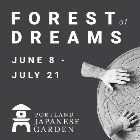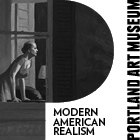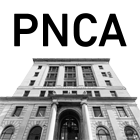
|
||
|
Portland art blog + news + exhibition reviews + galleries + contemporary northwest art
|
||
On Nuclear Time: Julia Bryan-Wilson at PSU
Last week, Houston-based artist Robert Pruitt kicked off the PSU MFA Monday Night Lecture series. Working with materials and ideas that he mines from the African-American communities that he grew up in, Pruitt forces a confrontation between the white box and black identity. Pruitt toes the line between his use of stereotypes and true cultural artifacts, citing rap culture, gold chains and Air Jordans alongside tongue-in-cheek allusions to everything from 70s conceptual art practice to Duchamp's ready-mades and Koons' love of commodity. Some of his work depends too much on one-liners, like his predictably subversive reworkings of paintings by Rockwell and Jacob Lawrence. In other work, Pruitt's formal practice melds nicely with the clash of his cultural allusions, such as in his hybrid microphone/vacuum, Duchampian nod to the low rider, a tribal DJ table created as an alter to memorialize the death of Ol' Dirty Bastard (included in the 2006 Whitney Biennial) and a series of guns adorned in everything from glittering rhinestones to wads of multi-colored bubble gum. This practice is extended in his collaborative work as part of Otabenga Jones & Associates, a collective who works under the guidance of fictional identity Otabenga Jones and whose peep-show garden, also included in the Whitney Biennial, was a nod to utopianism, revolutionary thought and Étant Donnés. Although Pruitt's work uses formal practice and racial stereotypes in a way that shares many similarities to the work of Arnold J. Kemp, who spoke last February as part of the same lecture series, he seems much more willing to embrace identity as a "black artist" than Kemp, whose work has been described as "post-black." This Monday, Julia Bryan-Wilson will give a lecture entitled On Nuclear Time. Though the press release did not reveal much detail about the talk, it appears to be part of an ongoing project looking at the social implications of nuclear technology. Last February, Bryan-Wilson presented a talk at NYU exploring how "how monuments mediate, enable, and block different kinds of futures." Used as a central case study, Bryan-Wilson looked at a warning sign created to caution people against digging on a nuclear waste dump near Carlsbad, New Mexico for the next 10,000 years as a starting point for her discussion. From the press release: Next in the series: Jeffry Mitchell on October 23rd Lecture · Monday, October 16th · 8:15 p Posted by Katherine Bovee on October 14, 2006 at 10:51 | Comments (0) Comments Post a comment Thanks for signing in, . Now you can comment. (sign out)
(If you haven't left a comment here before, you may need to be approved by
the site owner before your comment will appear. Until then, it won't appear
on the entry. Thanks for waiting.)
|
| s p o n s o r s |
 |
 |
 |
 |
 |
 |
 |
 |
 |
 |
 |
 |
 |
 |
 |
 |

|
Site Design: Jennifer Armbrust | • | Site Development: Philippe Blanc & Katherine Bovee | |


